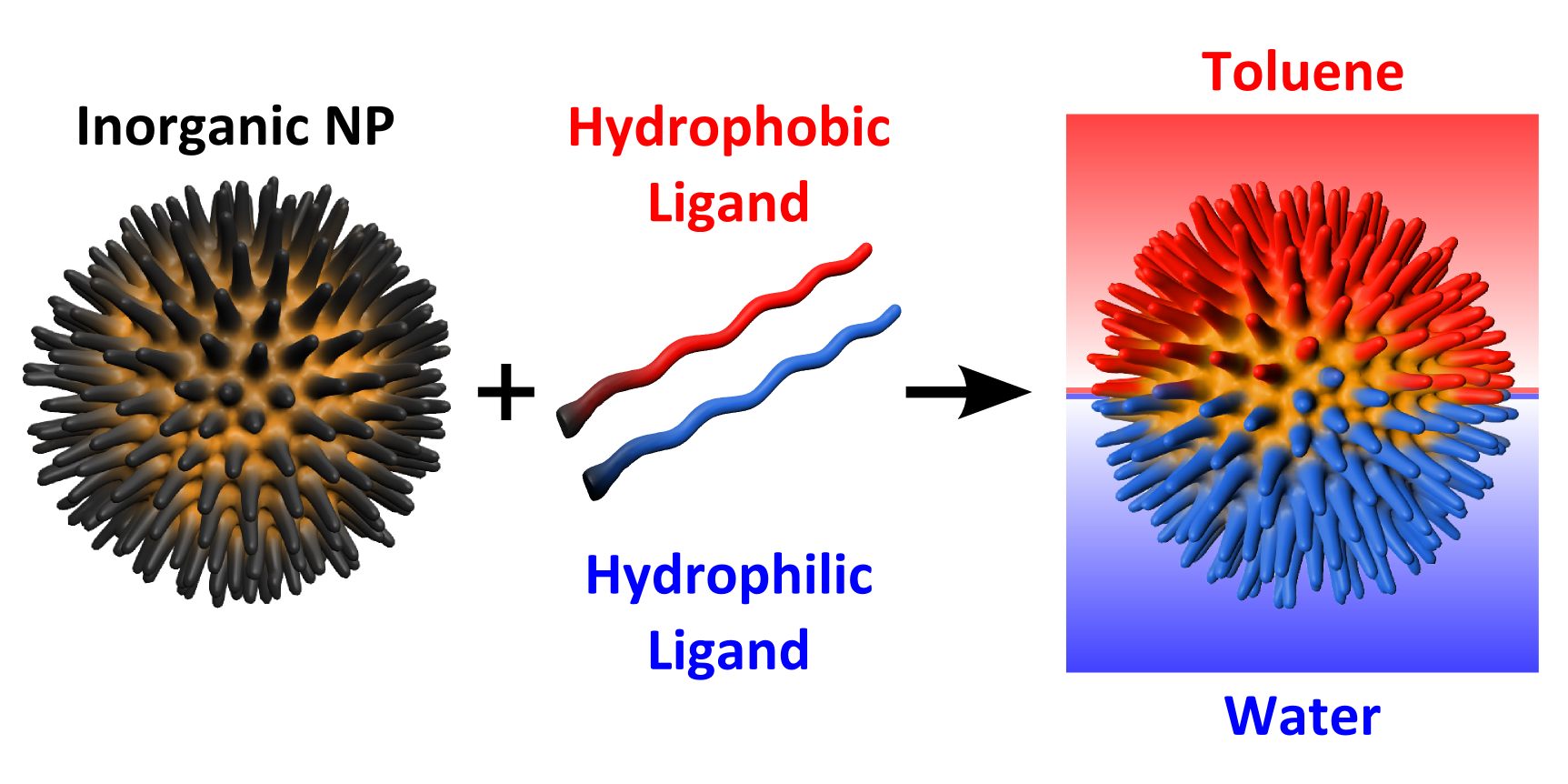The ability to functionalize nanoscale colloids with specific patterns of hydrophobic and hydrophilic surface regions remains an outstanding challenge in materials chemistry. Like molecular amphiphiles (e.g., surfactants and peptides), amphiphilic particles are desirable both as surface-active agents (e.g., for surface coatings or emulsion stabilization) and for their propensity to self-assemble into higher-order structures such as clusters, fibers, and lattices. Unlike their molecular analogs, however, amphiphilic nanoparticles (NPs) decorated with mixed monolayers of hydrophobic and hydrophilic ligands have the ability to both adapt their surface chemistry in response to environmental changes and respond to external fields acting on the particle cores. We are harnessing these unique capabilities to develop (1) new strategies for nanoscale self-assembly using adaptive interactions, (2) field responsive vesicles incorporating amphiphilic NPs, and (3) magnetic surfactants with dynamically tunable surface activity.
